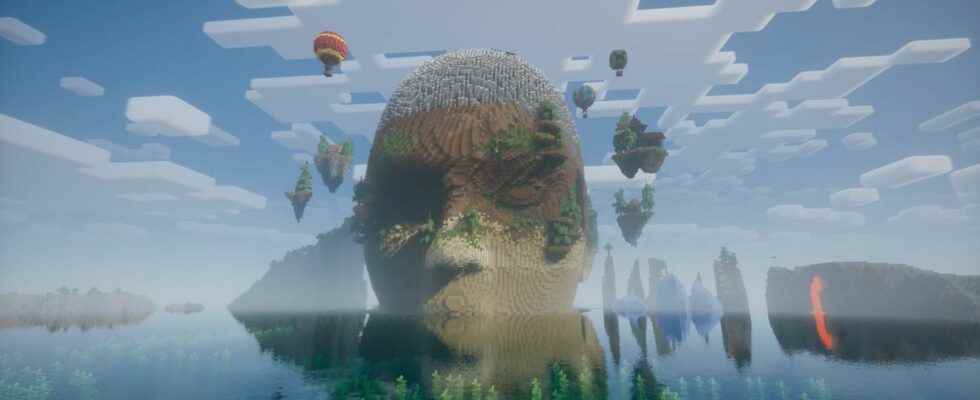In 2011, Minecraft revolutionized the world of video games by offering the possibility of building limitless pixelated worlds. This reference of games that we call “sandbox” (for their non-linear concept, mainly focused on the creativity of the players) hides today, behind its thousands of active servers to generate mini-games or build cities, elements whose use goes beyond the stage of simple entertainment.
This vast playground that has become so popular around the world has, since October 10, been taken over by the association Power Dys, which aims to help dyslexics get out of the spiral of failure. In collaboration with the communication agency BETC, the “Mindcraft” project was created. A free map, with the mission of identifying players with reading or writing disabilities. And this, directly through one of the most popular virtual universes in the world, Minecraft.
Of the 140 million players of Minecraft worldwide, 38% are affected by dyslexic disorders, according to a study. But without a diagnosis, it is difficult to be able to move towards appropriate treatments.
The real problem for a dyslexic is to get to know that he is. Screening is the start of everything.
Mathieu Nevianscreative director of BETC and initiator of the project, himself dyslexic
The creation of this card makes it possible to bring the tests to young players, and thus to be able to act upstream. “The creation of the “Mindcraft” map will allow players to be tracked from Minecraft in a fun and non-guilt-free way”adds neuropsychologist Béatrice Sauvageot, co-founder of the association Pouvoir Dys.
The “Mindcraft” map invites those who wish to play on a large playground divided into four labyrinthine challenge zones. Throughout the adventure, participants embody the character “Charlie” who will have to find his way back through tests. Shooting tests, routes and puzzles will be there to help with screening.

The choice of game Minecraft to deploy the project was obvious according to Mathieu Nevians: “A dyslexic child is more likely to find himself in an already created environment, he will thus go more easily to video games than to other disciplines”. The problems encountered by people with dyslexia in real life have been adapted in a playful and safe environment: “Dyslexic children find their bearings much more easily in cubic elements, and are therefore very comfortable with this game”, he details.
With “Mindcraft”, it is through success that players discover that they are dyslexic. “A less negative approach than when you learn this in a doctor’s office, where parents and children look out at the shoes”, argues Mathieu Nevians. A reversal of perspective on this difference, which is no longer seen as a dysfunction but as a superpower. “The course built in this map, and especially some of the tests, are only possible for a dyslexic to perform”concludes Matthew.
Even if it is still too early to have concrete feedback on the project, in the long term, Mathieu Nevians would like to see this system integrate schools: “The ideal would be for this to become a life-size test in the National Education, but this is a process that extends over the long term”. A proposal which is intended to be complementary with the possibilities of self-tests available on Dyslexie France.
To find out more and download the map, visit the Power Dys website.
